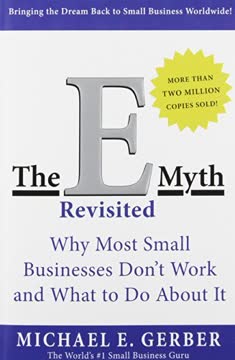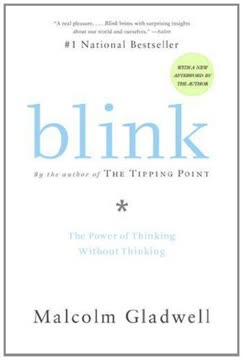つの重要なポイント
1. 少数者の法則:コネクター、メイヴン、セールスマンが社会的流行を駆動する
「あらゆる種類の社会的流行の成功は、特定の希少な社会的才能を持つ人々の関与に大きく依存している。」
コネクターは、友人や知人を作るのが非常に得意な人々です。彼らは異なる世界をつなぎ、アイデアを迅速に広める社会的ハブとして機能します。メイヴンは情報の専門家で、知識を蓄積し他人と共有します。彼らは自分の問題を解決することで他人の問題も解決する信頼される専門家です。セールスマンはカリスマ的な説得者で、強力な交渉スキルを持っています。彼らは言葉以上の何かを持っており、人々を納得させる力があります。
これらの3種類の人々は、口コミ流行を始める上で重要な役割を果たします:
- コネクター:様々な社会的サークルで多くの人々を知っている
- メイヴン:メッセージと情報を提供する
- セールスマン:納得していないときに私たちを説得するスキルを持っている
例:
- ポール・リビアはコネクターであり、彼の真夜中の騎行が植民地人にイギリスの侵略を警告するのに効果的だった理由を説明します
- マーク・アルパートは「マーケット・メイヴン」であり、製品と価格に関するほぼ強迫的な知識を持ち、それを他人と熱心に共有します
- トム・ガウは成功したファイナンシャルプランナーであり、信頼とラポールを迅速に築く自然な能力を持つセールスマンの典型です
2. スティッキネス・ファクター:小さな変化がメッセージをより記憶に残り、影響力を持たせる
「情報をパッケージ化する簡単な方法があり、適切な状況下ではそれを抵抗できないものにすることができます。あなたがしなければならないのは、それを見つけることです。」
微妙な変化が情報の提示において大きな影響を与えることがあります。この原則は、メッセージをより記憶に残り、実行可能にするための小さな調整がどのように効果を発揮するかを示すさまざまな例を通じて実証されています。
スティッキネス・ファクターの主な例:
- セサミストリート:マペットと人間のキャラクターを組み合わせることで、教育内容が子供たちにとってより魅力的になった
- ブルーズ・クルーズ:同じエピソードを5日間連続で放送し、子供たちが反復を通じて学ぶことができるようにした
- 破傷風予防接種キャンペーン:予防接種の場所と時間を示す地図を追加することで、参加率が劇的に増加した
スティッキネスを高めるための技術:
- 鮮明で具体的な言葉を使う
- 予想外または驚くべき要素を作り出す
- 感情に訴える
- 実用的な価値を提供する
- 聴衆に共鳴するストーリーを語る
- 重要な情報を異なる方法で繰り返す
3. コンテクストの力:環境が行動を形作る
「流行は、それが発生する時代や場所の条件や状況に敏感です。」
環境要因は、人間の行動を形作る上で重要な役割を果たし、個々の性格特性よりも大きな影響を与えることがよくあります。この概念は、行動が主に個人的な特性によって決定されるという一般的な信念に挑戦します。
コンテクストの力を示す主な例:
- ニューヨーク市の犯罪減少:壊れた窓を修理し、落書きを清掃することで犯罪率が大幅に減少した
- スタンフォード監獄実験:普通の人々が模擬監獄環境に置かれると残酷な行動を取るようになった
- 良きサマリア人研究:神学校の学生が急いでいるときに困っている人を助ける可能性が低かった
コンテクストの力の影響:
- 環境の小さな変化が行動に大きな影響を与える
- 社会問題は即時のコンテクストを変更することで対処できることが多い
- コンテクストを理解することで、グループ行動を予測し影響を与えることができる
- 個人の性格は固定されているというよりも状況に依存している可能性がある
4. ティッピングポイント:アイデア、トレンド、行動が閾値を超えて急速に広がる瞬間
「ティッピングポイントは、アイデア、トレンド、社会的行動が閾値を超え、急速に広がる魔法の瞬間です。」
ティッピングポイントは、徐々に進行する変化が突然劇的で急速な変革に変わる瞬間です。この概念は、ファッショントレンドから犯罪率、病気の拡散に至るまで、さまざまな現象に適用されます。
ティッピングポイントの特徴:
- 伝染性:アイデアや行動がウイルスのように広がる
- 小さな原因が大きな効果をもたらす:小さな変化が大規模なシフトを引き起こす
- 変化は徐々ではなく劇的に起こる
ティッピングポイントの例:
- ハッシュパピーの靴:絶滅寸前から主要なファッショントレンドに
- ニューヨーク市の犯罪率:長年の増加の後、1990年代に劇的に減少
- ミクロネシアの自殺流行:社会的伝染によりティーンエイジャーの間で急速に広がった
ティッピングポイントを理解することで:
- 新たなトレンドの初期兆候を特定する
- 社会的流行を開始または防止する戦略を作成する
- さまざまな分野で急速で予期しない変化の可能性を認識する
5. 口コミ流行は特定のパターンに従い、意図的に開始できる
「アイデアや製品、メッセージ、行動はウイルスのように広がります。」
口コミ流行はランダムな出来事ではなく、予測可能なパターンに従い、研究および再現が可能です。これらのパターンを理解することで、意図的にアイデアや製品を作成し広めることができます。
口コミ流行の主要な要素:
- 適切な人々(コネクター、メイヴン、セールスマン)
- スティッキーなメッセージ
- 適切なコンテクスト
口コミ流行を開始するための戦略:
- ターゲットコミュニティの主要なインフルエンサーを特定し、関与させる
- 記憶に残りやすく、共有しやすいメッセージを作成する
- 人々がアイデアや製品を体験し共有する機会を作る
- 社会的証明とピアインフルエンスを活用する
- メッセージを強化するために複数のチャネルを使用する
成功した口コミキャンペーンの例:
- エアウォークの靴:新興トレンドに基づいたターゲット広告を使用
- ホットメール:送信されたすべてのメッセージに「無料のメールをホットメールで取得」と追加
- ブレア・ウィッチ・プロジェクト:神秘的なオンラインマーケティングを通じて話題を作成
6. 150の法則:効果的な社会集団や組織のサイズを制限する
「150の法則は、グループのサイズが大きな違いを生む微妙なコンテクスト要因の一つであることを示唆しています。」
グループダイナミクスは、人数が約150人を超えると大きく変わります。この数はダンバー数として知られ、安定した社会的関係を維持できる人数の認知限界を表します。
150の法則の影響:
- 効果的なコミュニケーションと結束のための最適なグループサイズ
- 150を超えると、秩序を維持するために追加のルールや構造が必要
- 様々なコンテクストに適用:軍事部隊、宗教グループ、ビジネス
150の法則の実例:
- フッタライトコミュニティ:150人に近づくと2つに分かれる
- ゴア・アソシエイツ:最適な生産性のために工場を150人に制限
- 軍事部隊:通常、約150人の兵士で編成される
150の法則を適用するための戦略:
- 大規模な組織をより小さく管理しやすいユニットに分割する
- グループ内で個人的なつながりを育む
- 150人の制限を超えて関係を維持するために技術を活用する
- グループが大きくなるにつれて効果が低下する可能性に注意する
7. 変化を生み出すためには、すべてを一度に解決しようとするのではなく、重要な領域にリソースを集中させる
「ティッピングポイントはアイデアの伝記であり、そのアイデアは非常にシンプルです。それは、ファッショントレンドの出現、犯罪波の増減、無名の本がベストセラーになる変革、ティーンエイジャーの喫煙の増加、口コミの現象、または日常生活を特徴づける他の神秘的な変化を理解する最良の方法は、それらを流行として考えることです。アイデアや製品、メッセージ、行動はウイルスのように広がります。」
ターゲットを絞った介入は、広範で焦点の定まらない努力よりも効果的に大きな変化を生み出すことができます。このアプローチは、状況を変えるための重要な要因を特定し、それに集中することを含みます。
集中した変化のための原則:
- ティッピングポイントを生み出す重要な要因を特定する
- これらの重要な領域にリソースを集中させる
- 大きな効果をもたらす小さな変化を探す
- 非常識的または直感に反するアプローチを試みる意欲を持つ
成功したターゲット介入の例:
- ニューヨーク市の犯罪を減少させるために軽犯罪と「壊れた窓」に焦点を当てる
- 子供向け教育テレビ番組を改善するためにスティッキネスを高める小さな変更を行う
- ティーンエイジャーの喫煙と戦うためにうつ病とニコチン閾値に対処する
集中した変化を実施するための戦略:
- 重要なレバレッジポイントを特定するために徹底的な調査を行う
- 小規模で介入をテストし、洗練させてから拡大する
- 従来の知恵や既存の慣行に挑戦する準備をする
- 結果を注意深く監視し、必要に応じて戦略を調整する
8. 人間の行動は予想以上に変動しやすく、影響を受けやすい
「私たちは実際には周囲の環境、即時のコンテクスト、周りの人々の性格に強く影響を受けています。」
人間の行動は、内在する性格特性や長年の信念よりも、外部要因や即時のコンテクストに影響されることがよくあります。この理解は、人間の性格の一貫性や行動の変化の難しさに関する私たちの仮定に挑戦します。
行動に影響を与える要因:
- 即時の物理的環境
- 社会的コンテクストとピアプレッシャー
- 微妙な手がかりや提案
- 感情状態や気分
- 最近の経験やプライミング
行動の変動性の例:
- スタンフォード監獄実験:普通の学生が模擬監獄環境で残酷な行動を取るようになった
- 良きサマリア人研究:神学校の学生が急いでいるときに困っている人を助ける可能性が低かった
- 壊れた窓理論:近隣の小さな無秩序の兆候が犯罪の増加につながる
影響:
- 行動の変化は一般に考えられているよりも達成しやすいかもしれない
- 環境やコンテクストの変化は行動に影響を与える強力なツールとなる
- 行動を性格や性格だけに帰することには注意が必要
9. 社会的流行はファッショントレンドから犯罪波まで、ポジティブまたはネガティブなものになる可能性がある
「人々の信念や行動に根本的な変化をもたらしたい場合は、新しい信念が実践され、表現され、育まれるコミュニティを作る必要があります。」
社会的流行は、社会にとって有益なものもあれば有害なものもあります。これらの流行のメカニズムを理解することで、ポジティブな変化を促進し、ネガティブなものを軽減することができます。
社会的流行の種類:
- ファッショントレンドや流行
- 健康行動(例:喫煙、運動習慣)
- 犯罪波
- 政治運動
- 技術の採用
- 文化現象
社会的流行の特徴:
- 伝染性
- 小さな原因が大きな効果をもたらす
- ティッピングポイントに達すると劇的で急速な変化
社会的流行の例:
- ポジティブ:リサイクル習慣の急速な採用
- ネガティブ:ティーンエイジャーの喫煙の広がり
- ニュートラル:新しいダンスクレーズの突然の人気
社会的流行を管理するための戦略:
- 主要なインフルエンサー(コネクター、メイヴン、セールスマン)を特定し、関与させる
- ターゲットオーディエンスに共鳴するスティッキーなメッセージを作成する
- 望ましい行動を促進するためにコンテクストを操作する
- 意図しない結果に注意する
10. ティッピングポイントを理解することで、最小限のリソースで意味のある変化をもたらすことができる
「周りの世界を見てください。それは動かしがたく、厳然とした場所のように
最終更新日:
FAQ
What's "The Tipping Point" about?
- Concept of Tipping Points: "The Tipping Point" by Malcolm Gladwell explores how small actions at the right time, in the right place, and with the right people can create a tipping point for change.
- Three Rules of Epidemics: The book introduces three rules of epidemics: the Law of the Few, the Stickiness Factor, and the Power of Context, which explain how trends spread.
- Diverse Examples: Gladwell uses examples from fashion, crime, and public health to illustrate how these principles apply to various social phenomena.
Why should I read "The Tipping Point"?
- Understanding Social Change: The book provides insights into how small changes can lead to significant social transformations, valuable for marketing, sociology, or psychology enthusiasts.
- Practical Applications: It offers practical advice on creating and controlling social epidemics, useful for business leaders, educators, and policymakers.
- Engaging Storytelling: Gladwell's engaging writing style and use of real-world examples make complex theories accessible and interesting.
What are the key takeaways of "The Tipping Point"?
- Law of the Few: A small number of people, known as Connectors, Mavens, and Salesmen, play a crucial role in spreading ideas and trends.
- Stickiness Factor: For an idea to spread, it must be memorable and impactful, which can be achieved through small but significant changes in presentation.
- Power of Context: The environment and circumstances play a critical role in tipping social epidemics, as demonstrated by the Broken Windows theory in crime reduction.
What is the Law of the Few in "The Tipping Point"?
- Key Influencers: The Law of the Few suggests that a small number of people with unique social gifts are responsible for the spread of ideas and trends.
- Connectors, Mavens, Salesmen: These individuals are categorized as Connectors (who know many people), Mavens (who accumulate knowledge), and Salesmen (who persuade others).
- Social Epidemics: These people are crucial in starting social epidemics because they have the ability to reach and influence a large number of people.
What is the Stickiness Factor in "The Tipping Point"?
- Memorable Messages: The Stickiness Factor refers to the quality of a message that makes it memorable and capable of creating change.
- Small Changes, Big Impact: Small adjustments in how information is presented can significantly enhance its stickiness, as seen in the success of "Sesame Street" and "Blue’s Clues."
- Practical Examples: The book illustrates this concept with examples like the gold box in direct marketing and the map in the tetanus shot study.
What is the Power of Context in "The Tipping Point"?
- Environmental Influence: The Power of Context emphasizes that human behavior is sensitive to and strongly influenced by environmental factors.
- Crime Reduction Example: The Broken Windows theory demonstrates how addressing minor crimes and signs of disorder can lead to a significant reduction in serious crime.
- Epidemic Tipping: Contextual changes, even small ones, can tip an epidemic, as seen in the dramatic drop in New York City crime rates in the 1990s.
How does "The Tipping Point" explain crime reduction in New York City?
- Broken Windows Theory: The book attributes the decline in crime to the application of the Broken Windows theory, which focuses on maintaining order and addressing minor offenses.
- Subway System Cleanup: Initiatives like cleaning graffiti and cracking down on fare evasion helped change the environment and reduce crime.
- Contextual Tipping: These efforts created a tipping point by altering the context in which crime occurred, leading to a broader decline in criminal behavior.
How does "The Tipping Point" relate to marketing and business?
- Understanding Consumer Behavior: The book provides insights into how trends spread, which is valuable for marketers looking to create viral campaigns.
- Influence of Key Individuals: Identifying and leveraging Connectors, Mavens, and Salesmen can help businesses reach a wider audience and increase their impact.
- Enhancing Stickiness: By making small changes to how products or messages are presented, businesses can increase their stickiness and improve customer engagement.
How can I apply the concepts from "The Tipping Point" in my own life?
- Identify Key Influencers: Recognize the Connectors, Mavens, and Salesmen in your network and leverage their influence to spread your ideas or products.
- Focus on Stickiness: Make your messages memorable and impactful by paying attention to how they are presented and received.
- Consider the Context: Be aware of the environmental factors that may influence behavior and look for ways to create a context that supports your goals.
What are some examples from "The Tipping Point"?
- Hush Puppies Revival: The resurgence of Hush Puppies shoes in the mid-1990s is an example of a tipping point, driven by a few influential people in the fashion industry.
- New York City Crime Drop: The dramatic decline in crime in New York City during the 1990s is attributed to small changes in policing and the environment, illustrating the Power of Context.
- Sesame Street's Success: The show's ability to educate children effectively is an example of the Stickiness Factor, where the content was crafted to be engaging and memorable.
What are the best quotes from "The Tipping Point" and what do they mean?
- "The Tipping Point is the biography of an idea": This quote encapsulates the book's exploration of how small changes can lead to significant social transformations.
- "Ideas and products and messages and behaviors spread just like viruses do": Gladwell draws a parallel between social epidemics and viral infections, emphasizing the contagious nature of trends.
- "The Power of Context says that human beings are a lot more sensitive to their environment than they may seem": This highlights the importance of environmental factors in shaping human behavior and tipping social epidemics.
How does "The Tipping Point" explain social epidemics?
- Combination of Factors: Social epidemics occur when the right combination of people, message, and context come together to create a tipping point.
- Role of Key Individuals: Connectors, Mavens, and Salesmen play a crucial role in spreading ideas and behaviors, acting as catalysts for change.
- Importance of Context and Stickiness: The environment and the stickiness of the message are equally important in determining whether an idea will tip into a widespread phenomenon.
レビュー
本書『ティッピング・ポイント』は、アイデアやトレンドがどのようにして伝染病のように広がるかを探求し、三つの重要な要素に焦点を当てている。それは、「少数者の法則」、「スティッキネス・ファクター」、そして「文脈の力」である。読者はグラッドウェルの文体を魅力的と感じ、彼の例を興味深いと評価したが、一部の人々は彼の逸話への依存や研究の解釈の緩さを批判した。本書の概念は特にマーケティングや社会科学の分野で多くの人々に共鳴した。ある人々はこの本を画期的と感じた一方で、他の人々はそのアイデアを明白または単純化しすぎていると感じた。総じて、本書は広範な議論を引き起こした、思考を刺激する影響力のある作品である。
Similar Books























